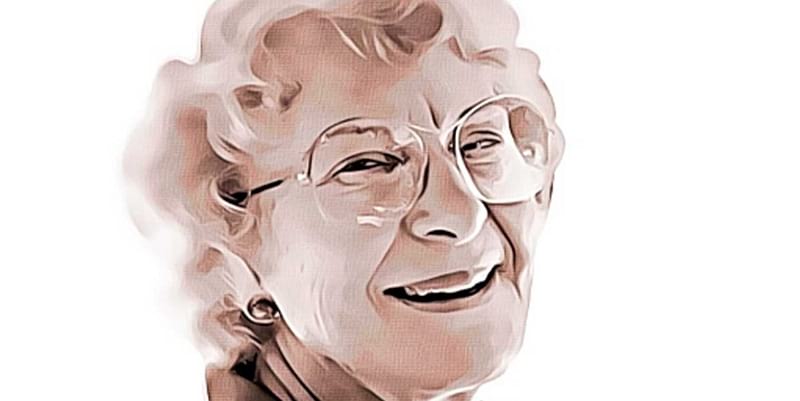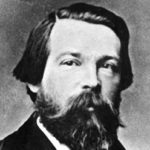Virginia Satir biografie en boeken

Virginia Satir (26 juni 1916 – 10 september 1988) was een Amerikaanse psychotherapeut en auteur. Virginia Satir wordt gezien als de pionier van de gezinstherapie door haar baanbrekende werk op het gebied van gezinsreconstructietherapie. Ze staat ook bekend om de ontwikkeling van het Satir change management model, een model voor verandermanagement dat wordt toegepast door zowel grote als kleine organisaties.
Virginia Satir biografie
Vroege jaren en onderwijs
Virginia Satir werd geboren als Virginia Pagenkopf in Neillsville, Wisconsin, in de Verenigde Staten. Ze was de oudste van de vijf kinderen van Alfred Reinnard Pagenkopf en Minnie Happe Pagenkopf.
Virginia was een zeer nieuwsgierig en leergierig kind en leerde zichzelf op driejarige leeftijd lezen. Ze droomde er als klein kind van een kinderdetective te worden.
In 1929 verhuisde het complete gezin naar Milwaukee, waar Virginia ook naar de middelbare school ging. In deze periode gingen de Verenigde Staten door de Grote Depressie, wat het financieel een uitdagende periode maakte voor het gezin.
Om de druk op het gezin te verlichten besloot Virginia om een bijbaan te zoeken en versneld haar middelbareschooldiploma te behalen. Die haalde ze in 1932, waarna ze zich aanmeldde voor het Milwaukee State Teachers College.
Ook tijdens deze periode had Virginia meerdere bijbaantjes om het gezin te steunen. Ze betaalde de opleiding zelf door in verschillende warenhuizen te werken en door wat bij te verdienen als babysitter.
In 1936 behaalde ze haar bachelorsdiploma van de Milwaukee State Teachers College, waarna ze zich inschreef voor de Northwestern University in Chicago. Tegelijkertijd bleef ze lesgeven op de openbare school in Williams Bay, Wisconsin.
Ze voltooide haar masterstudie aan de University of Chicago School of Social Services Administration vijf jaar later, na het inleveren van haar scriptie.
Het was al tijdens deze periode dat Virginia besefte dat ze als docente niet alleen kinderen in de klas kon helpen, maar ook hun ouders waardoor ze de gezinsdynamiek van veel gezinnen kon verbeteren.
Virginia begon de ouders van haar leerlingen te ontmoeten en begon het familiesysteem te zien als een weerspiegeling van de wereld als geheel. Ze zei: “Als we kinderen en gezinnen kunnen genezen, dan kunnen we ook de wereld genezen.”
Loopbaan van Virginia Satir
Na het afronden van haar studies begon Virginia Satir met het opzetten van haar eigen therapieloopbaan. In 1951 hielp ze een eerste gezin met problematiek.
Vier jaar later sloot ze zichzelf aan bij het Illinois Psychiatric Institute, waar ze begeleiding gaf aan andere therapeuten met als doel om zoveel mogelijk te focussen op het gezin als geheel in plaats van de individuen.
Aan het einde van de jaren 1950 richtte ze samen met enkele anderen het Mental Research Institute op in Californië. Ze ontving er een beurs voor in 1962, waarmee ze meewerkte aan het eerste formele therapietrainingsprogramma.
Het jaar daarop werd ze directeur van de afdeling residentiële training. In 1964 schreef ze haar eerste boek: Conjoint Familiy Therapy. Dit boek kwam tot stand op basis van haar trainingshandleiding die ze schreef voor de studenten van het Mental Research Institute. Twee jaar later publiceerde ze nog een boek: Peoplemaking.
In 1977 werd het Avanta Network opgericht, onder leiding van Virginia Satir. Ook werd ze benoemd tot lid van de Steering committee of the International Family Therapy Association.
In de jaren tachtig hield Virginia zich vooral bezig met het begeleiden van therapeuten en huwelijksconsulenten om zich te concentreren op het geven van relatieonderwijs. Dit was volgens haar van cruciaal belang voor elk gezond netwerk, dus ook voor organisaties. Ze benadrukte deze overtuiging in het laatste boek dat ze schreef, voordat ze stierf. Dit boek heet The New Peoplemaking.
Bijdrage aan de psychologische wetenschap wereld
Virginia Satir benaderde therapie vanuit een perspectief dat nog niet eerder gebruikt werd. Ze geloofde dat de problemen waarmee clienten aankwam zelden de echte problemen waren. Volgens haren lagen er vaker diepere problemen aan ten grondslag en werden oppervlakkige problemen vaak verward met die diepere problemen.
Ze stelde dat psychische problemen vaak het gevolg waren van negatieve ervaringen in het gezin en de opvoeding. Ze legde een nadrukkelijke focus op de behandeling van het hele gezin in plaats van de individuele persoon.
Ze legde haar visie vast in het Satir’s Transformational Systemic Therapy-model. Dit model staat ook wel bekend als het Satir change management model. De focus daarin ligt op het betrekken van de innerlijke persoon en het analyseren van de situatie en de keuzes van een persoon. Dit model werd de basis voor het welbekende NLP model, Meta model van Richard Bandler en John Grinder. Deze wordt nu wereldwijd in allerlei NLP trainingen geleerd en gebruikt.
In haar boek Conjoint Family Therapy benadrukte ze het belang van individuele eigenwaarde. Ze kreeg hiervoor veel erkenning vanuit de wereld van de psychologie. Haar populariteit groeide enorm in deze periode. Vanuit de hele wereld was vraag naar haar boeken en Virginia Satir werd erkend door de American Association for Marriage and Family Therapy en de Academy of Certified Social Workers.
In haar praktijk hielp Virginia Satir mensen om te gaan met het accepteren van het leven zoals het is. Dit is cruciaal om een gezonde gemoedstoestand te bereiken. Ze moedigde haar cliënten aan om te mediteren, ademhalingsoefeningen te doen en positieve resultaten te visualiseren.
Persoonlijke leven van Virginia Satir
Zij ontmoette per toeval in 1941 een soldaat op een onbekend busstation. Binnen drie weken na hun ontmoeting waren ze getrouwd. De soldaat in kwestie vertrok tijdens de Tweede Wereldoorlog naar Europa en keerde terug na het aflopen van de oorlog. Tijdens zijn afwezigheid adopteerde Satir twee kinderen.
Toen haar echtgenoot terugkwam uit Europa bleek het huwelijk niet langer bestand tegen de tijd. Ze vroegen in 1949 een scheiding aan. In 1951 trouwde zij opnieuw, dit keer met Norman Satir, een psychiater.
Virginia Satir stierf op 10 september 1988. Ze werd 72 jaar oud.
Bekende quotes
- “Adolescents are not monsters. They are just people trying to learn how to make it among the adults in the world, who are probably not so sure themselves.”
- “As a therapist, I am a companion. I try to help people tune into their own wisdom.”
- “Each morning when you wake up, bow three times before the mirror and say, “The world is a better place because I am here.”
- “Every word, facial expression, gesture, or action on the part of a parent gives the child some message about self-worth. It is sad that so many parents don’t realize what messages they are sending”
- “Feelings of worth can flourish only in an atmosphere where individual differences are appreciated, mistakes are tolerated, communication is open, and rules are flexible – the kind of atmosphere that is found in a nurturing family.”
- “I believe the greatest gift I can conceive of having from anyone is to be seen by them, heard by them, to be understood and touched by them. The greatest gift I can give is to see, hear, understand and to touch another person. When this is done I feel contact has been made.”
- “I give life to that which I notice. What I don’t notice dies.”
- “I know people can change-right down to my bones, through every cell, in every fiber of my body-I now that people can change. It is just a question of when and in what context.”
- “I own me, and therefore, I can engineer me. I am me, and I am Okay.”
- “I want to appreciate you without judging. Join you without invading. Invite you without demanding. Leave you without guilt.”
- “I want to love you without clutching, appreciate you without judging, join you without invading, invite you without demanding, leave you without guilt, criticize you without blaming, and help you without insulting. If I can have the same from you, then we can truly meet and enrich each other.”
- “I want you to get excited about who you are, what you are, what you have, and what can still be for you. I want to inspire you to see that you can go far beyond where you are right now.”
- “I believe the greatest gift I can conceive of having from anyone is to be seen by them, heard by them, to be understood and touched by them.”
- “It is okay for me to feel angry and to express it in responsible ways.”
- “It’s sad that children cannot know their parents when they were younger; when they were loving, courting, and being nice to one another. By the time children are old enough to observe, the romance has all too often faded or gone underground.”
- “Life is not the way it’s supposed to be, it’s the way it is. The way you cope with it is what makes the difference.”
- “Many people are living in an emotional jail without realizing it.”
- “Once a human being has arrived on this earth, communication is the largest single factor determining what kinds of relationships he makes with others and what happens to him in the world about him.”
- “Our biggest problem as human beings is not knowing that we don’t know.”
- “Over the years I have developed a picture of what a human being living humanely is like. She is a person who understand, values and develops her body, finding it beautiful and useful; a person who is real and is willing to take risks, to be creative, to manifest competence, to change when the situation calls for it, and to find ways to accommodate to what is new and different, keeping that part of the old that is still useful and discarding what is not.”
- “People prefer the certainty of misery to the misery of uncertainty.”
- “Problems are not the problem: coping is the problem.”
- “So much is asked of parents, and so little is given.”
- “The full life is filled with vulnerability, not defense. You face whatever feeling there is.”
- “The Problem is never the problem! It is only a symptom of something much deeper.”
- “The symbol in Chinese for crisis is made up of two ideographs: one means danger, the other means opportunity. This symbol is a reminder that we can choose to turn a crisis into an opportunity or into a negative experience.”
- “There are five freedoms: The freedom to see and hear what is; The freedom to say what you feel and think; The freedom to feel what you actually feel; The freedom to ask for what you want; The freedom to take risks on your own behalf.”
- “To see and hear what is here, instead of what should be, was, or will be. To say what I feel and think instead of what I should. To feel what I feel instead of what I ought. To ask for what I want instead of always waiting for permission. To take risks on my behalf, instead of choosing to be safe and not rock the boat.”
- “We can learn something new anytime we believe we can.”
- “We get together on the basis of our similarities; we grow on the basis of our differences.”
- “We must not allow other people’s limited perceptions to define us.”
- “We need 4 hugs a day for survival. We need 8 hugs a day for maintenance. We need 12 hugs a day for growth.”
- “What lingers from the parent’s individual past, unresolved or incomplete, often becomes part of her or his irrational parenting.”
- “You have all played a significant part in my development of loving. As a result, my life has been rich and full, so I leave feeling very grateful.”
- “Your responses to the events of life are more important than the events themselves.”
Bekende publicaties en boeken van Virginia Satir et al.
- 2001. Self Esteem. Celestial Arts.
- 1998. Concepts of communication: Ways of perceiving the world: Definition of a relationship. Journal of Couples Therapy, 7(2-3), 1-9.
- 1994. Helping families to change. Jason Aronson, Incorporated.
- 1991. The Satir model: family therapy and beyond. Palo Alto, CA: Science and Behavior Books.
- 1990. Say it straight: From compulsions to choices. Science & Behavior Books.
- 1988. The new peoplemaking. Science & Behavior Books.
- 1988. Family reconstruction: The family within—a group experience. Journal for Specialists in Group Work, 13(4), 200-208.
- 1987. The therapist story. Journal of Psychotherapy & the family, 3(1), 17-25.
- 1986. Assertive / leveling communication and empathy in adolescent drug abuse prevention. Journal of Primary Prevention, 6(4), 231-243.
- 1983. Satir step by step: a guide to creating change in families. Palo Alto, CA: Science and Behavior Books.
- 1983, 1967. Conjoint family therapy: A guide to theory and technique. Palo Alto, CA: Science and Behavior Books
- 1978. Your many faces. Celestial arts.
- 1976. Making contact. Celestial arts.
- 1976. Changing with families: A book about further education for being human (Vol. 1). Science and behavior Books.
- 1975. Family life education-a perspective on the educator. Small Group Behavior, 6(1), 3-10.
- 1972. Peoplemaking. Science and Behavior Books.
- 1963. The Quest for Survival A Training Program for Family Diagnosis and Treatment. Acta Psychotherapeutica Et Psychosomatica, 33-38.
- 1961. A method of analysis of a family interview. Archives of General Psychiatry, 5(4), 321-337.
Citatie voor dit artikel:
Janse, B. (2022). Virginia Satir. Retrieved [insert date] from Toolshero: https://www.toolshero.nl/bekende-auteurs/virginia-satir/
Oorspronkelijke publicatiedatum: 08/06/2022 | Laatste update: 06/09/2023
Wilt u linken naar dit artikel, dat kan!
<a href=”https://www.toolshero.nl/bekende-auteurs/virginia-satir/”>Toolshero: Virginia Satir</a>












